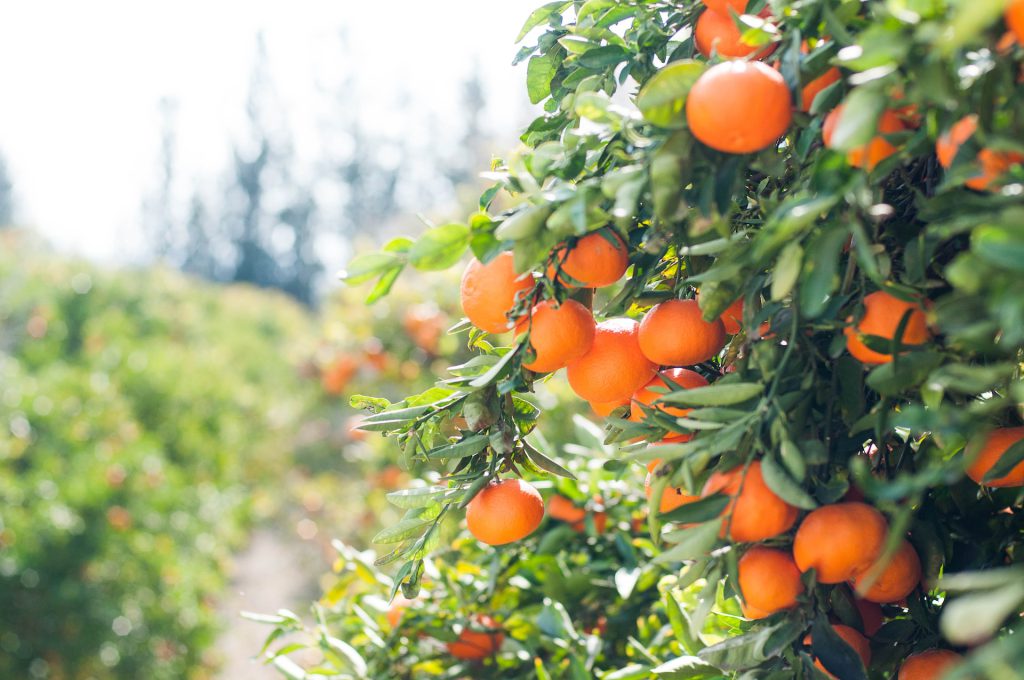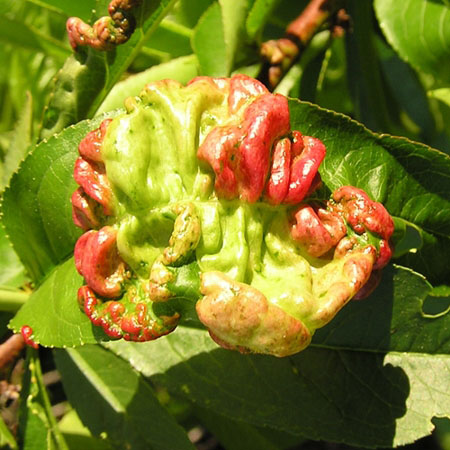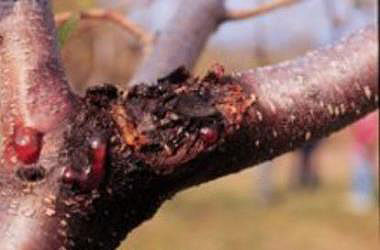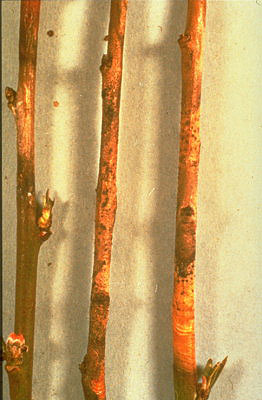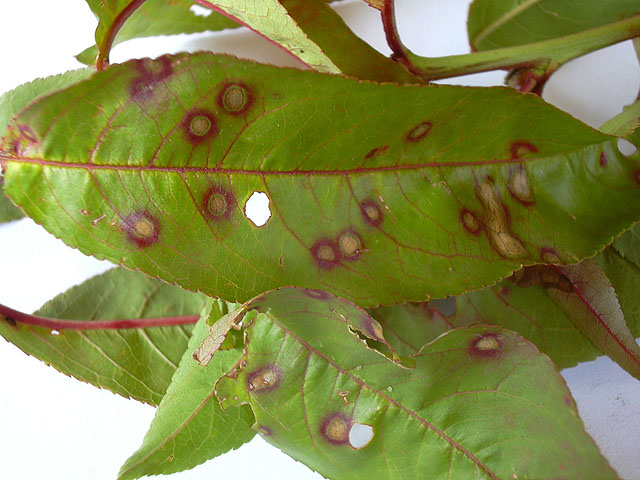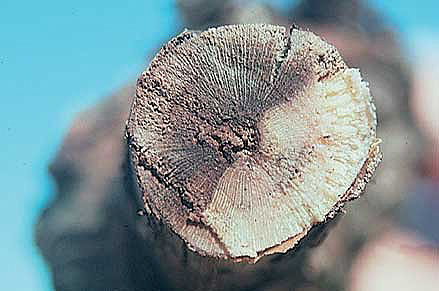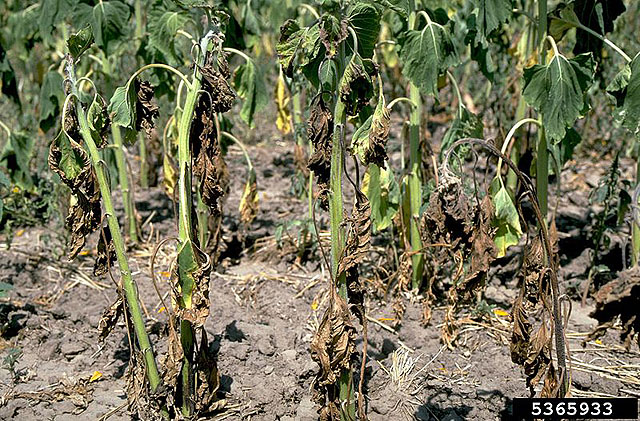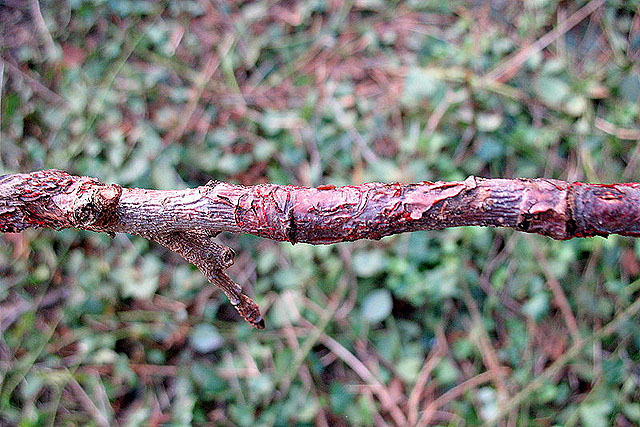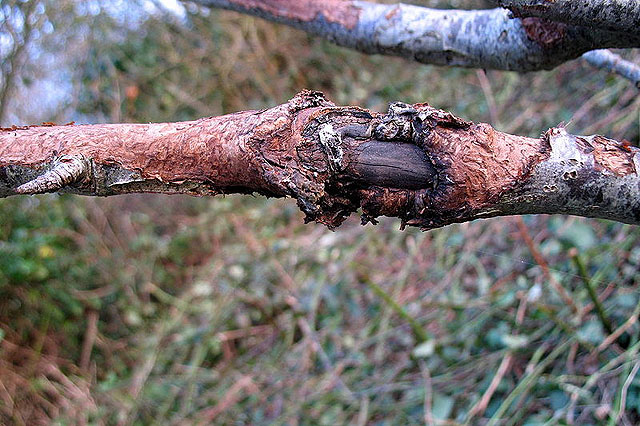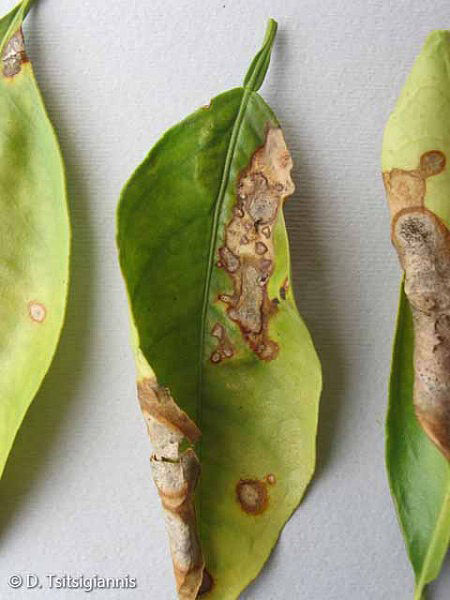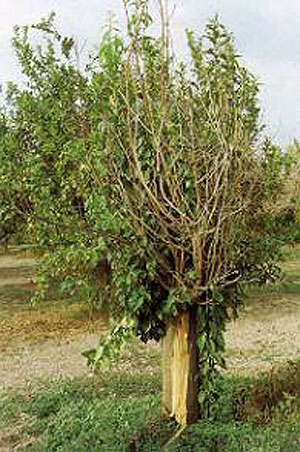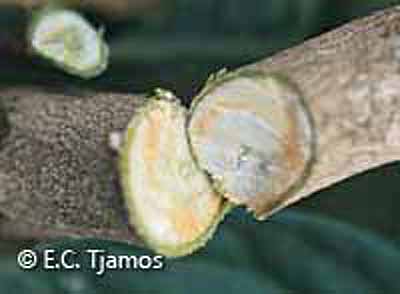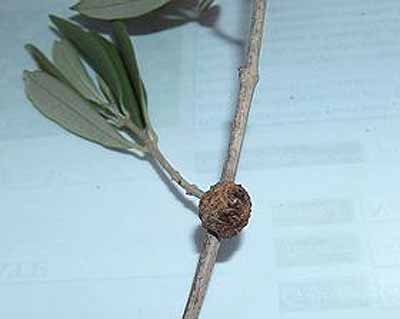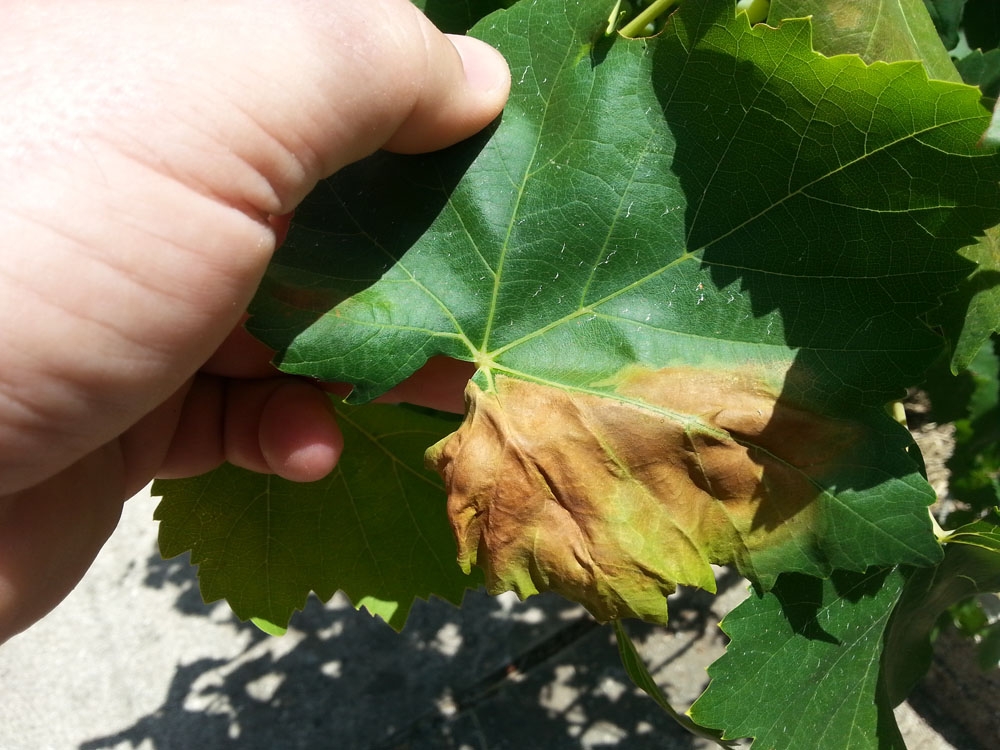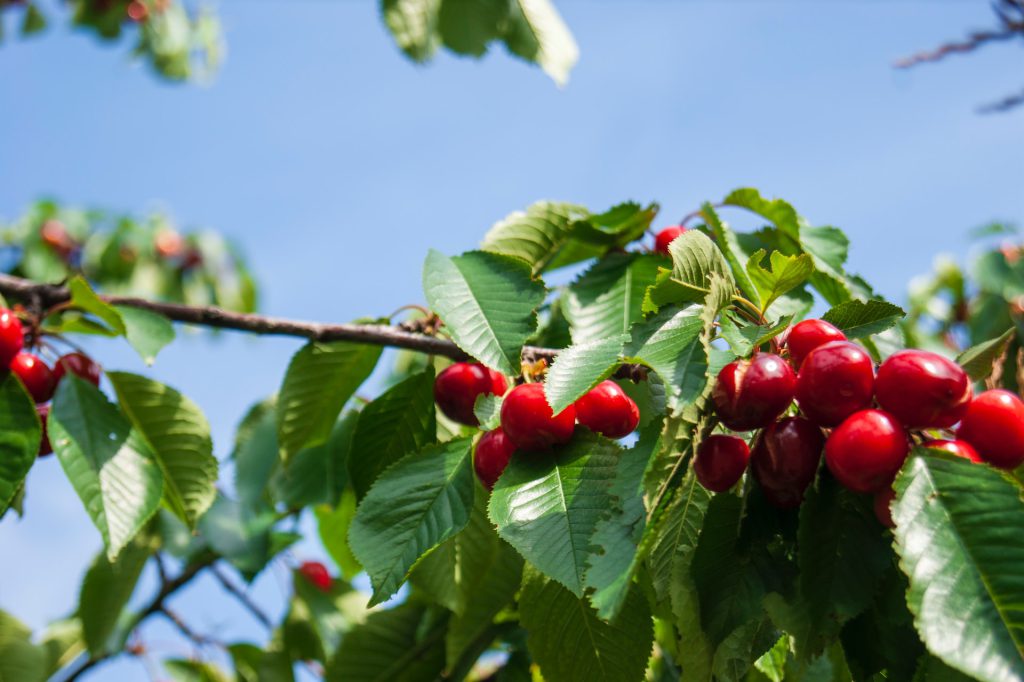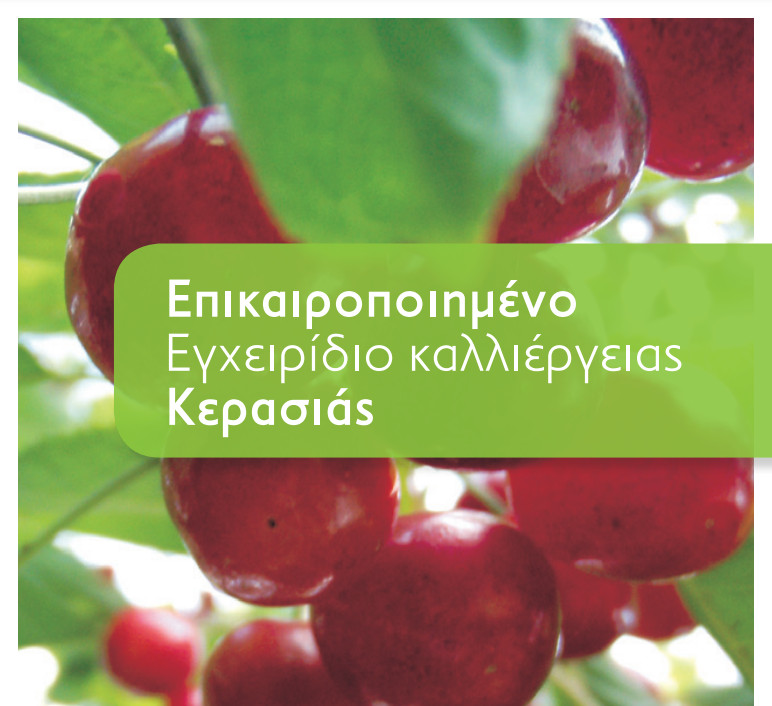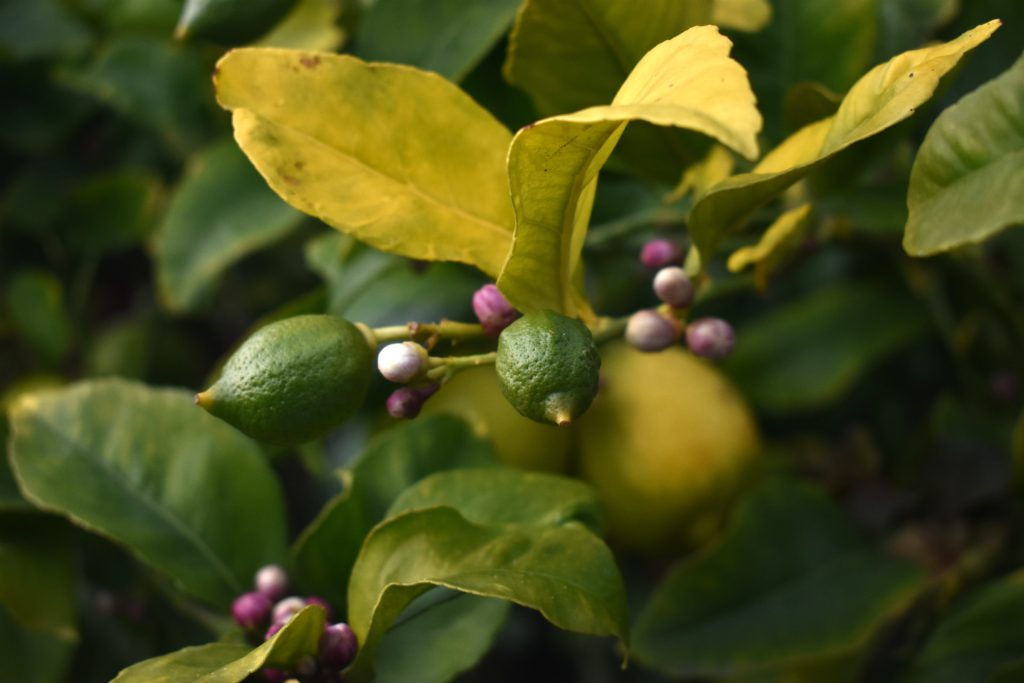Preventive tree spraying is what we can do for our trees to prevent diseases.
S.O.S.: We need to know that no matter what we read, no matter what we are told, no matter what we hear, it is good to act in accordance with the agricultural warnings for our area and consult with local agronomists.
Stone fruits: apricot, cherry, plum, cherry, nectarine and peach
Leaf curl or Peach leaf curl (caused by Taphrina deformans)
This disease is caused by several species of the genus Taphrina.
Prevention is based on a single spray, which may be applied in autumn after the leaves have fallen and until the buds swell, with a slurry of bordeaux paste or copper oxychloride or another copper-containing substance.
Caution: After the pathogen has entered our tree the treatment is not very easy!!!
If our trees are weakened by leaf curl, we need to reinforce our trees with nitrogen fertilization, periodic irrigations and thinning of the fruits according to the volume of the foliage.
Figure 1. Peach leaf curl on a peach leaf.
Bacterial cancer
The disease is caused by the bacterium Pseudomonas syringae.
To prevent the bacterium, the following are recommended: two sprays of 1% Bordeaux paste or 0.5% copper oxychloride.
The first is done when the leaves start to fall and the second when 75% of the leaves have fallen.
Pruning of trees should be done in early autumn before the rains start and to avoid wounding during the period when they are susceptible, i.e. autumn-winter.
Finally, remove and destroy by fire the affected parts in summer, in dry weather.
Figure 2. Bacterial cancer.
Branch ulcer (caused by Fusicoccum amygdali)
The fungus doing the damage is Fusicoccum amygdali.
Careful removal and fire destruction of all affected twigs is required. This should be done as soon as the first symptoms appear, at any time of the year. This measure is very important because it is aimed at eliminating the outbreaks of infection.
2- 3 sprays / 10 days are recommended, in the autumn, at leaf fall and at bud swelling.
It must be said that the spraying is determined by the season and the duration of rainfall in each area.
Figure 3. Branch ulcer.
Shot hole disease
Caused by the fungus Wilsonomyces carpophilus.
The following spraying schedule is recommended: in autumn, at the fall of leaves, with borage slurry or copper oxychloride, repeat the same just before the buds “swell”, at the fall of petals, spray with thiram, ziram, folpet (I mention some indicatively, there are also others fungicides) and after 20 days again with the same fungicides.
Figure 4. Shot hole disease on leaves.
Gummosis or Dying arm or Eutypa dieback (in vineyards)
The damage is done by the fungus Eutypa lata.
Pruning, carried out in dry weather, is followed by spraying the trees with benomyl or we apply benomyl to the wounds.
Finally, we remove the affected parts and to the fire (burn them)!
Figure 5. Damage of Eutypa dieback on a vine branch.
Verticillium wilt (caused by Verticillium dahliae)
Verticillium wilt on stone fruit is caused exclusively by species of the genus Verticillium.
There is no chemical control of the disease and its management is based solely on the use of healthy propagating material, in uncontaminated soil, the use of resistant varieties and avoiding planting trees on a plot of land previously used for potatoes, cotton, etc.
If we have contaminated soil and no other place is ‘available’, we do the following: we disinfect with methyl bromide or methyl isothiocyanate or with solar heat where we cover the surface of the soil with transparent polythene sheets from July to September.
In short, we are solarizing.
We also avoid making wounds with our cultivation tools in the root area, we do not irrigate with the “furrow” system because the contaminant is carried by water, we fight weeds frequently and densely, and we uproot dried trees!
Figure 6. Verticillium wilt on sunflower plants.
Apple trees: pear, apple, apple, rowan, quince and muskmelon
Apple scab (caused by Venturia inaequalis) on apple tree
Apple scab disease is caused due to the fungus Venturia inaequalis.
The most effective and economical way of combating the disease is preventive spraying according to the vegetative stages of the tree’s development.
At least three sprays are necessary: when the buds have opened and the green bud is 1.5 cm long, when the flowers have separated but not opened and when about 75% of the leaves have fallen.
Suitable fungicides are: copper (usually used for the first 2 sprays), ditalimfos, dithianon etc. If the weather is rainy and there is a risk of infection, continue spraying.
Also, cultivation measures: avoid planting apple trees on low-lying soils, do not plant sparsely and prune appropriately. See apple tree article.
Black spot of pear (caused by Venturia pyrina)
Here we have another fungus, Venturia pirina.
For the treatment it is suggested: spraying just before flowering, spraying at petal fall and a third spray 15 days after the second spray.
If we consider that there is a need, we continue the sprays for 15 days and use the fungicides that are for apple scab.
To reduce outbreaks of infection, once we have established that something is going wrong, we remove and burn affected parts and fruits.
This measure is applied before the rains start in autumn and continues through the winter. See pear tree article.
Apple canker (caused by Neonectria ditissima)
Caused by the fungus Neonectria ditissima (syn. Neonectria galligena).
Spray 2 to 3 times with Bordeaux paste just before leaf fall, when 50% of the leaves have fallen and just before bud opening.
However, if we see ulcers on our trees, we clean them and definitely cover them with disinfectant paste (dry weather).
Figure 7. Apple canker.
Figure 8. Apple canker (a few days later).
Black spot (caused by Alternaria alternata)
The name of the fungus is Alternaria alternata.
Various cultural measures are taken, such as burying the leaves and destroying the affected fruit.
If you notice a very serious problem, it is advisable to replace your variety with a more resistant one.
Figure 9. Black spot on orange tree leaves.
Fire blight (caused by Erwinia amylovora)
The disease is caused by the bacterium Erwinia amylovora.
Timely application of sprays during flowering is a very effective action. Apply three sprays/week with the first spray when 5% of the flowers have “opened”.
We also spray after a hailstorm.
However, if we notice infestations we cut off the affected parts together with a healthy section of 20-25 cm length. See pear tree article.
Bacterial canker (caused by Pseudomonas syringae)
Caused by the bacterium Pseudomonas syringae.
It is a related species to the bacterium that causes bacterial canker on stone fruits but they differ in some respects, so… 1-2 sprays with Bordeaux paste or cuprous during the flowering period are suggested but the first spray is done with the flowers closed!
Phytophthora diseases of the neck (trunk)
Fungi of the genus Phytophthora cause these diseases.
We can use completely healthy saplings and plant them at the same depth as they were in the nursery, we apply the trunk, up to one meter from the ground, with bordeaux paste either in late autumn or early spring, we take care that the base of the trunk does not come into contact with watering water and finally we avoid creating wounds on the roots and trunks.
Citrus fruit: citrus, lemon, mandarin, orange, sour orange tree and grapefruit
Mal secco (caused by Phoma tracheiphila)
Mal secco disease is caused by the fungus Phoma tracheiphila.
Recommended: use resistant varieties, avoid damaging the roots, trunk and shoots.
In particular, avoid working the soil in autumn (late) and winter.
If possible, we protect the trees with windbreaks.
We also prune after the end of the rains and apply a protective paste.
Spraying is recommended, starting at the end of October and monthly, with bordeaux paste or copper oxychloride.
Figure 10. Mal secco disease.
Figure 11. Mal secco in a sour orange tree.
Anthracnose (caused by Colletotrichum gloeosporioides)
Anthracnose is caused by the fungus Colletotrichum gloeosporioides.
In this case we keep our tree in good physiological condition and protect it from factors that cause wilting or injury.
If there is a problem, harvest the fruit as soon as possible.
Trunk diseases
Tree nuts: almond, peanut, walnut, hazelnut, chestnut
Bacterial canker (caused by Pseudomonas amygdali)
Caused by the bacterium Pseudomonas amygdali.
As a preventive measure we do the following: 2 sprays with 1% Bordeaux paste or 0.5% copper oxychloride are recommended.
One is done when foliage loss begins and the second after 15-20 days.
Spraying the trees after hail or frost, using resistant varieties such as Ferragnes, Feranduel and Marcona, removing and destroying by fire all affected branches, especially in summer, and then disinfecting the tools in a 5% formalin solution in water.
Shot hole disease (caused by Stigmina carpophila)
Gummosis
Branch ulcer
Olive tree
Olive peacock spot (caused by Spilocaea oleaginea)
The olive peacock spot disease is caused by the fungus Spilocaea oleagina.
Control is based on preventive spraying with suitable fungicides with a clear predominance of copper-based fungicides.
The best protection is provided by Bordeaux paste.
Usually two sprays of 1% Bordeaux paste are carried out.
The first is carried out in early autumn before the rains start and the second in early spring.
In areas with more favorable conditions for infestations, such as very high morning relative humidity in spring and summer, it is almost necessary to carry out three or four sprays per year (one or two in spring and two in autumn) with an interval of one and a half months between them.
Figure 12. Olive peacock spot on an olive leaf.
Anthracnose (caused by Colletotrichum gloeosporioides)
Anthracnose in olive trees is caused by the fungus Colletotrichum gloeosporioides.
Two sprays of bordeaux paste or another effective fungicide are recommended as a preventive measure to combat it.
The first is usually carried out at the end of October and the second in the third ten days of November. Of course, the appropriate time is also determined by the climatic conditions in the area concerned.
It is also important to avoid planting olives in areas that are low, damp and poorly ventilated. It is advisable to carry out appropriate pruning to thin the trees.
Camarosporium dalmaticum
In Greece the disease caused by Camarosporium dalmaticum, has 3 different names: Βούλα or Ξηροβούλα or Σαποβούλα. Each name prevails depending on the stage of development of the fungus and the fungus is Camarosporium dalmaticum.
The preventive method we use for Dacus insect also covers us for the disease even though one is an insect and the other is a fungus.
So, we spray with a bait insecticide, that is, insecticide together with an attractant.
Spraying is done only on one side of the tree every third tree and at a rate of about 300 ml/tree.
The first spray is usually done in mid-June to early July, we monitor and act accordingly.
There is no exact number of sprays, but certainly the last one should be done at least 20 days before we harvest our olives.
Verticillium wilts
Verticillium wilts (caused by Verticillium dahliae)
Shoot necrosis in olive trees (caused by Phoma incompta)
Its treatment is mainly based on prevention, i.e. systematic removal of affected branches when the weather is dry and destruction by fire, one or two protective sprays during the rainy season help.
In addition, the Greek olive tree varieties Koroneiki and Manaki are resistant to the disease.
Knot disease (caused by Pseudomonas savastanoi)
It is caused by the bacterium Pseudomonas savastanoi.
There are no effective treatment measures for the disease, but the following should be applied: remove the diseased branches and burn them, cut them off with a sharp knife as soon as tumors are observed, and apply the wound with Bordeaux paste.
This operation should be carried out in the summer months and in dry weather.
Disinfect our tools in a solution of formalin in water in a 5% ratio or some other disinfectant.
In addition, avoid pruning in wet and rainy weather, and spray your trees with 1% bordeaux paste or other copper-based formulation immediately after hail or frost.
If conditions are conducive to disease development (wet weather and open wounds), spray once or twice with a copper formulation from June to early September.
To be precise, the period of infestations coincides with the rainy season in each region.
Figure 13. Knot disease in the olive tree.
Bless you all!
Agronomist Sophia Papazoglou
Agronomist- Msc Environmental Management.
Tags: DISEASES • PREVENTION • SPRAYING • TREES

